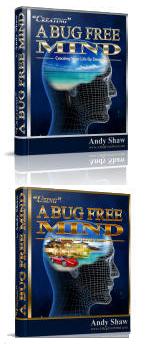This post is following on from another posting that I wrote back in October 2011 about how some training methods introduced by the Japanese into Karate can be damaging to our bodies.
Going back further in Okinawan Karate history before Karate was introduced to Japan, they had the interesting concept of Shu-Ha-Ri, which I have discussed before. However, to recap:
Shu: means that you copy your master as closely as possible, to learn his techniques in as much detail as you can.
Ha: means that once your technique is up to a good standard, you have the freedom to make subtle changes to suit your own physique and experiences.
Ri: means that you have mastered the techniques to the extent that they are a natural part of you. At this point the student may transcend the master.
This is not a far cry from Bruce Lee’s famous quote: “Absorb what is useful, reject what is useless, add what is specifically your own.”
The “Ha” part in particular tells us that it was expected for the advanced student to adapt their Karate to suit themselves. Although there is a certain amount of leeway for us to do this today, we are still in the main confined to what our seniors tell us is our style. We are not free to change our kata’s to do (for example) a Front Kick rather than a Side Snap Kick which we might struggle with. Can you imagine the masters of old raised with the concept of Shu-Ha-Ri, insisting that their student continue to do a technique that damaged their joints, simply because it was always done that way? If you want to train in the traditional manner, rather than a “traditional style”, then maybe you should consider making little changes to suit your own body.
To quote Matsuo Basho a haiku poet, we should progress: “Not by blindly flowing the footsteps of the old masters, but by seeking what they sought”
There are a number of examples of Shu-Ha-Ri in modern martial arts. I hope martial artists of other styles will forgive me for focusing on Shotokan Karate, but it is the style that I’m most familiar with, (though I’m sure other styles have similar examples).
Those of us who have trained in Shotokan Karate over the decades have instinctively known (especially in the early days) that something was missing. Not just in the unrealistic bunkai that was taught to us by our Japanese masters, but sometimes technically in the art. We would see films or read magazine articles about masters doing great feats with seemingly no effort, yet we were encouraged to put more and more effort into our training (overly exhaling and tensing to create kime) as we progressed. That seemingly mystical ability to generate masses of power with little effort, derived from pure technique which we thought we would attain as we progressed, seemed to become more elusive as we rose through the grades. Very few senior Sensei in those earlier days seemed to be able to show us anything except more of the same. As my former Sensei, Graham Mead used to say, “ We were ending up with 2nd & 3rd Dans who were really just very good brown belts”.
However, over the years things have gradually changed and mainly for the better. Sport science has obviously shown that fast movement requires relaxation rather than more tensing. The emphasis on deep stances has relaxed (though Shotokan stances are still deeper than many others). Little things like bending the back leg slightly in Zenkutsu Dachi (front stance) relieves the tension on the lower spine and hips has replaced the straight back leg which was common years ago.
These all help to reduce the damage to our bodies that many early practitioners suffered from.
The availability of many other martial arts have allowed exploration to fill the gaps and bring some of the answers back into mainstream Shotokan.
Master Hirokazu Kanazawa, 10th Dan and founder of the Shotokan Karate International, also studied Tai Chi. When he taught around the world he would often have Tai Chi seminars alongside the Karate seminars. His Karate has become much more softer and more relaxed than most others and he has inspired many Shotokan practitioners of all associations to take up Tai Chi (including me).
The Late Master Tetsuhiko Asai, 10th Dan, lived and taught in Taiwan form many years. During this time he also studied White Crane Kung Fu, Dim Mak (critical nerve points) and Qi Gong. He placed great emphasis on relaxation and using the body like a whip. He was the founder of the Japan Karate Shotorenmei and brought his own special influences to bear on the Shotokan world.
These influences along with many others have led Shotokan Karate to become very varied depending on which association or instructor you train with. Some versions are quite relaxed like the original Okinawan Karate making it a healthy art to practice, whilst others are still quite stiff like the early post war Karate which can be damaging.
Taekwondo too has also changed significantly over the years and now has many variations. Some associations for example have introduced a sine-wave movement into their step to also create a more relaxed manner of moving.
Please add any other examples below of how any martial art has been adapted to make it healthier to train.



